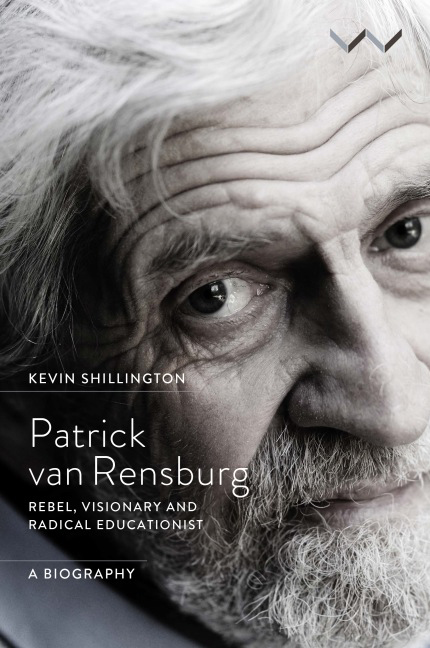Book contents
- Frontmatter
- Dedication
- Contents
- Acknowledgements
- Abbreviations and Acronyms
- List of Illustrations
- Maps
- Introduction
- 1 Origins and Identity in South Africa
- 2 An Anglophone South African, 1936–1948
- 3 The Making of an Afrikaner, 1949–1953
- 4 Diplomat and Rebel, 1953–1957
- 5 Anti-Apartheid Activist, 1957–1959
- 6 Boycott, 1959–1960
- 7 Into Exile, 1960–1961
- 8 Return to Africa, 1961–1962
- 9 The Founding of Swaneng Hill School, 1962–1963
- 10 Challenging ‘The Ladder to Privilege’, 1963–1965
- 11 The Alternative Educationist, 1965–1967
- 12 Expansion and Replication, 1967–1969
- 13 Time of Crisis, 1969–1971
- 14 Education with Production, the 1970s
- 15 Foundation for Education with Production and Spreading the Word, the 1980s
- 16 Education with Production and South Africa, the 1990s
- 17 Return to Botswana
- Epilogue
- Notes
- Bibliography
- Index
2 - An Anglophone South African, 1936–1948
Published online by Cambridge University Press: 10 September 2020
- Frontmatter
- Dedication
- Contents
- Acknowledgements
- Abbreviations and Acronyms
- List of Illustrations
- Maps
- Introduction
- 1 Origins and Identity in South Africa
- 2 An Anglophone South African, 1936–1948
- 3 The Making of an Afrikaner, 1949–1953
- 4 Diplomat and Rebel, 1953–1957
- 5 Anti-Apartheid Activist, 1957–1959
- 6 Boycott, 1959–1960
- 7 Into Exile, 1960–1961
- 8 Return to Africa, 1961–1962
- 9 The Founding of Swaneng Hill School, 1962–1963
- 10 Challenging ‘The Ladder to Privilege’, 1963–1965
- 11 The Alternative Educationist, 1965–1967
- 12 Expansion and Replication, 1967–1969
- 13 Time of Crisis, 1969–1971
- 14 Education with Production, the 1970s
- 15 Foundation for Education with Production and Spreading the Word, the 1980s
- 16 Education with Production and South Africa, the 1990s
- 17 Return to Botswana
- Epilogue
- Notes
- Bibliography
- Index
Summary
In 1936 Jumbo, who worked for the railways, was transferred to Durban and the Lagesse family moved with him, as his salary had become a vital ingredient of the household income. They settled in Moore Road (now Che Guevara Road), a residential lane in the Berea district, not far from the city centre. Once again the house they rented was large enough to accommodate lodgers.
Patrick, now aged four, began to attend the Davaar Kindergarten. He was particularly taken by any practical work that he was set. He loved making things, a fascination that was to remain with him throughout his adult life. At the age of six he moved to St Henry's Marist Brothers’ College, a private school, catering for all levels, from junior primary to senior secondary. His school uniform and other school expenses were paid for by Uncle Pat. Indeed, every birthday Patrick would be taken by car to Uncle Pat's mother's flat in Durban, where he was treated to a birthday tea and presents from Uncle Pat and his sister, whom Patrick knew as ‘Auntie Maidie’.
Patrick seems to have been above average at all the usual school subjects at St Henry’s, but the one that particularly attracted him was Science. His first visit to the Science laboratory was a revelation as he watched one of the Marist Brothers heating and blowing glass into various shapes. He was ‘becoming more and more interested in how things were made’. The subject the school regarded as most important, however, was the study of the Catechism, a question-and-answer booklet that laid out the core beliefs of the Roman Catholic faith. These had to be learned by rote and chanted back to the Brother, regardless of any real understanding. In this way Patrick was prepared for his First Communion, and later for his Confirmation, performed in the cathedral by the bishop.
His grandmother was a strong devotee of her adopted Catholicism and the family attended Mass every Sunday in the cathedral, which was not far away. Once he had taken his First Communion Patrick would regularly attend confession on Saturday evenings. Then, having confessed his sins and silently recited the allocated prayers for his penance, he would leave the cathedral exhilarated and uplifted, no matter how trivial the misdemeanours he had just confessed.
- Type
- Chapter
- Information
- Patrick van RensburgRebel, Visionary and Radical Educationist, a Biography, pp. 15 - 30Publisher: Wits University PressPrint publication year: 2020

